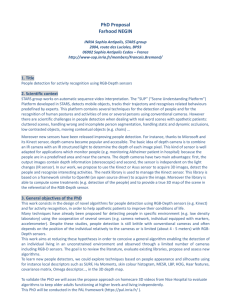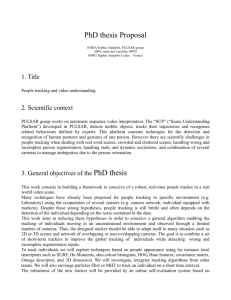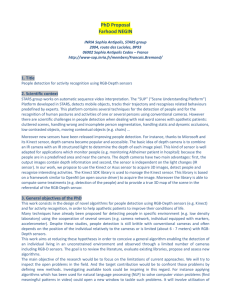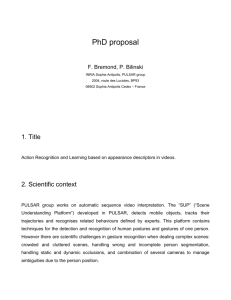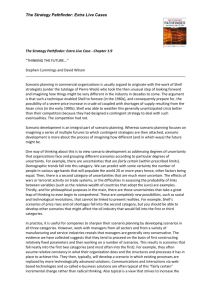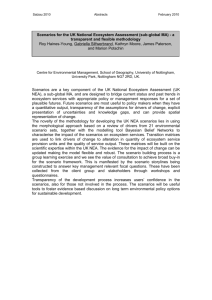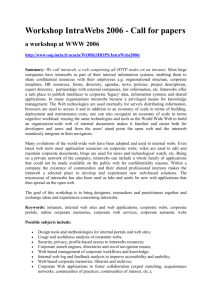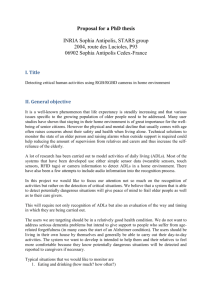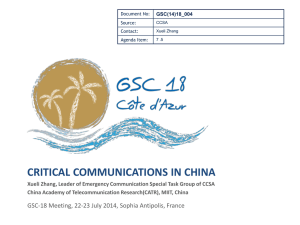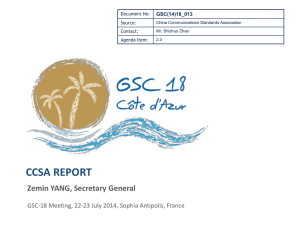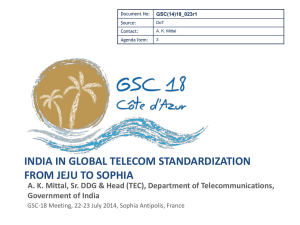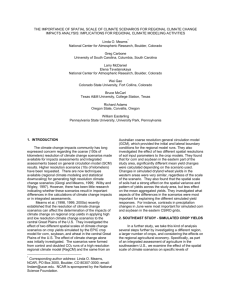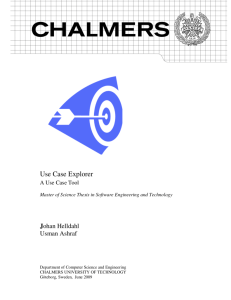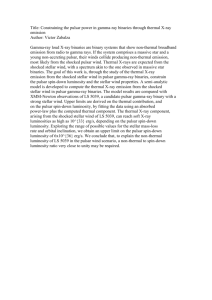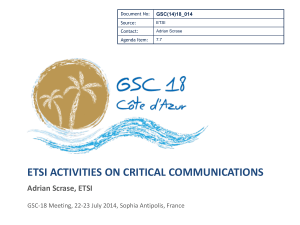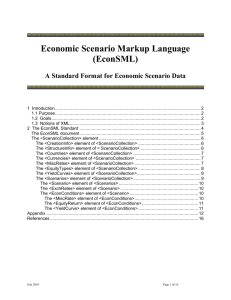Video Understanding for Group Behavior Analysis
advertisement
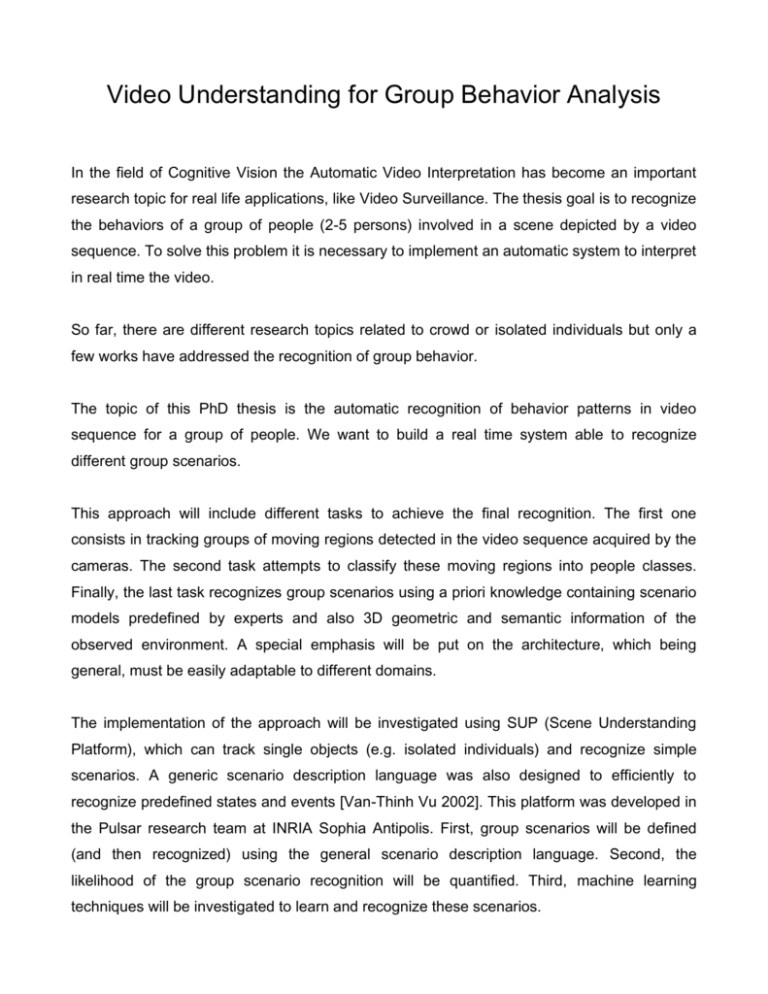
Video Understanding for Group Behavior Analysis In the field of Cognitive Vision the Automatic Video Interpretation has become an important research topic for real life applications, like Video Surveillance. The thesis goal is to recognize the behaviors of a group of people (2-5 persons) involved in a scene depicted by a video sequence. To solve this problem it is necessary to implement an automatic system to interpret in real time the video. So far, there are different research topics related to crowd or isolated individuals but only a few works have addressed the recognition of group behavior. The topic of this PhD thesis is the automatic recognition of behavior patterns in video sequence for a group of people. We want to build a real time system able to recognize different group scenarios. This approach will include different tasks to achieve the final recognition. The first one consists in tracking groups of moving regions detected in the video sequence acquired by the cameras. The second task attempts to classify these moving regions into people classes. Finally, the last task recognizes group scenarios using a priori knowledge containing scenario models predefined by experts and also 3D geometric and semantic information of the observed environment. A special emphasis will be put on the architecture, which being general, must be easily adaptable to different domains. The implementation of the approach will be investigated using SUP (Scene Understanding Platform), which can track single objects (e.g. isolated individuals) and recognize simple scenarios. A generic scenario description language was also designed to efficiently to recognize predefined states and events [Van-Thinh Vu 2002]. This platform was developed in the Pulsar research team at INRIA Sophia Antipolis. First, group scenarios will be defined (and then recognized) using the general scenario description language. Second, the likelihood of the group scenario recognition will be quantified. Third, machine learning techniques will be investigated to learn and recognize these scenarios. Time table: Time period 6 months Task Introduction to the problem: 1. Study of existing solutions: group tracking and recognition of group behavior. 2. Study of similar problems: tracking and recognition of crowd or isolated individual behavior. 3. Study of existing machine learning techniques. 6 months Development of a generic approach for group tracking and recognition of group behavior. 6 months Evaluation of the proposed approach. 6 months Improvement of the proposed approach. Extension to estimate the likelihood of the group scenario recognition. Machine learning technique investigation. 6 months Validation of the proposed approach. Experiments with different scenes. 6 months Concluding works; Preparation of a thesis. Bibliography: Van-Thinh Vu 2002: Van-Thinh Vu, Francois Bremond, and Monique Thonnat: Temporal Constraints for Video Interpretation. Proceedings of the 15th European Conference on Artificial Intelligence (ECAI'2002), Lyon, France, 21 - 26 July 2002; F. van Harmelen (Eds.), IOS Press, 2002. Required Background and Skills Strong background in C++, cognitive vision, machine learning. Location and Duration 3 years full-time within the PULSAR group of INRIA Sophia-Antipolis, FRANCE. Supervisors François BREMOND Projet PULSAR, INRIA-Sophia Antipolis 2004 route des Lucioles BP 93 06902 Sophia Antipolis Cedex, FRANCE Contacts Email: francois.bremond@sophia.inria.fr Tel: (+33) 4 92 38 76 59
